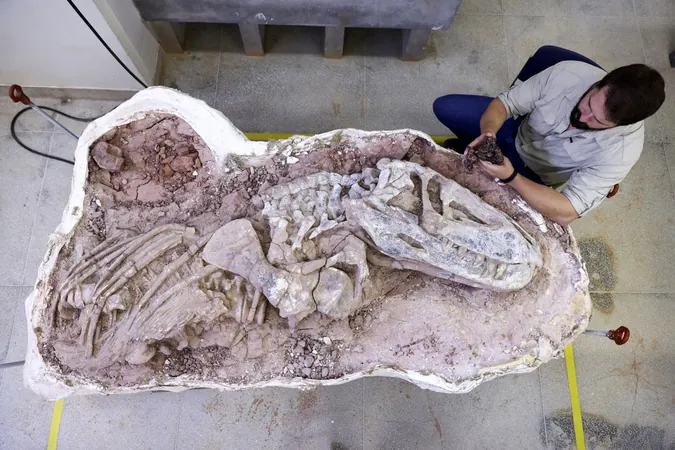
Revolutionary Discovery of Ancient Fossil Unlocks Secrets to Dinosaur Evolution!
2024-10-15
Author: Lok
Ancient Fossil Discovery in Brazil
In an astonishing breakthrough, scientists in Brazil have unearthed one of the oldest fossils ever found, dating back an incredible 237 million years, which could provide vital insight into the rise of the dinosaurs.
The Newly Discovered Species
The newly discovered species, named Gondwanax paraisensis, is a fascinating four-legged reptile about the size of a small dog, measuring around one meter (or 39 inches) in length and weighing between three to six kilograms (7 to 13 pounds). This remarkable creature once roamed the now-southern region of Brazil when the Earth experienced much hotter climates.
Significance of the Discovery
Identified as a new member of the silesaurid group—extinct reptiles that have long baffled paleontologists—the debate continues as to whether they represent true dinosaurs or perhaps precursors to these majestic creatures that once dominated the planet. Understanding these ancient reptiles is essential, as it could illuminate crucial aspects of the evolutionary success that allowed dinosaurs to flourish.
Context of the Fossil
Discovered in rock layers from the Triassic period (252 to 201 million years ago), the Gondwanax paraisensis fossil dates to a time when the first dinosaurs as well as early mammals, crocodiles, turtles, and frogs began to emerge. It was during this prehistoric era that life as we know it started to evolve in complex and diverse ways.
Discovery Journey
The fossil was found by physician Pedro Lucas Porcela Aurelio in 2014 in Paraiso do Sul, the southernmost state of Rio Grande do Sul in Brazil. After donating it to a local university in 2021, three years of meticulous research brought the ancient creature's secrets to light.
Reflections from the Discoverer
"Being the first human to touch something from 237 million years ago is extraordinary," Aurelio expressed, describing the indescribable joy of interacting with such an ancient remnant of life. His passion for paleontology has driven him to unearth this significant find.
Research and Publication
The discovery has been detailed in a research article by paleontologist Rodrigo Temp Müller, published last month in the scientific journal Gondwana Research. Müller emphasized, “The most important part of this finding is its age. Because it’s so old, it gives us clues as to how dinosaurs came to be.” Initially covered by a thick rock layer, only parts of the vertebrae were visible when Aurelio donated it, illustrating the intriguing process of fossil recovery.
Etymology of the Name
The name Gondwanax translates to "lord of Gondwana," referencing the ancient southern landmass that existed within the supercontinent Pangaea before the continents drifted apart. The species name paraisensis pays tribute to the town of Paraiso do Sul.
Conclusion and Future Research
This discovery not only tantalizes the scientific community but also excites those fascinated by the evolutionary tales that connect ancient ecosystems to the iconic dinosaurs we know today. Could this fossil be the key to understanding how these majestic creatures began their reign? Only time and further research will tell! Stay tuned for more revelations from the depths of our planet’s prehistoric past!



 Brasil (PT)
Brasil (PT)
 Canada (EN)
Canada (EN)
 Chile (ES)
Chile (ES)
 España (ES)
España (ES)
 France (FR)
France (FR)
 Hong Kong (EN)
Hong Kong (EN)
 Italia (IT)
Italia (IT)
 日本 (JA)
日本 (JA)
 Magyarország (HU)
Magyarország (HU)
 Norge (NO)
Norge (NO)
 Polska (PL)
Polska (PL)
 Schweiz (DE)
Schweiz (DE)
 Singapore (EN)
Singapore (EN)
 Sverige (SV)
Sverige (SV)
 Suomi (FI)
Suomi (FI)
 Türkiye (TR)
Türkiye (TR)